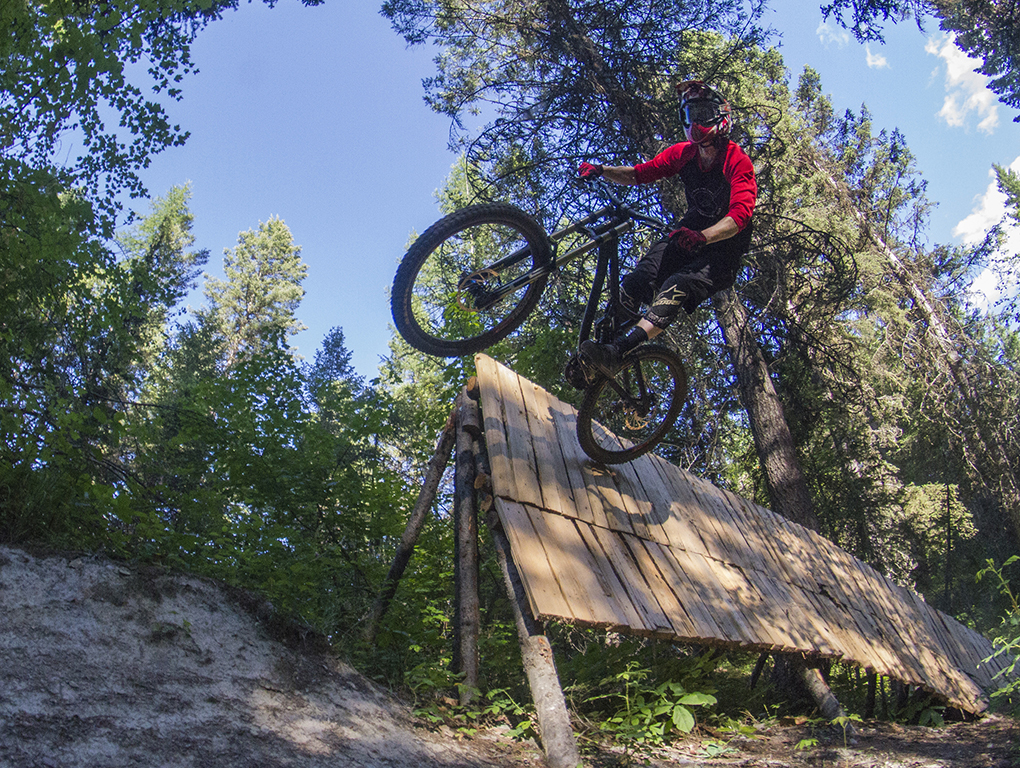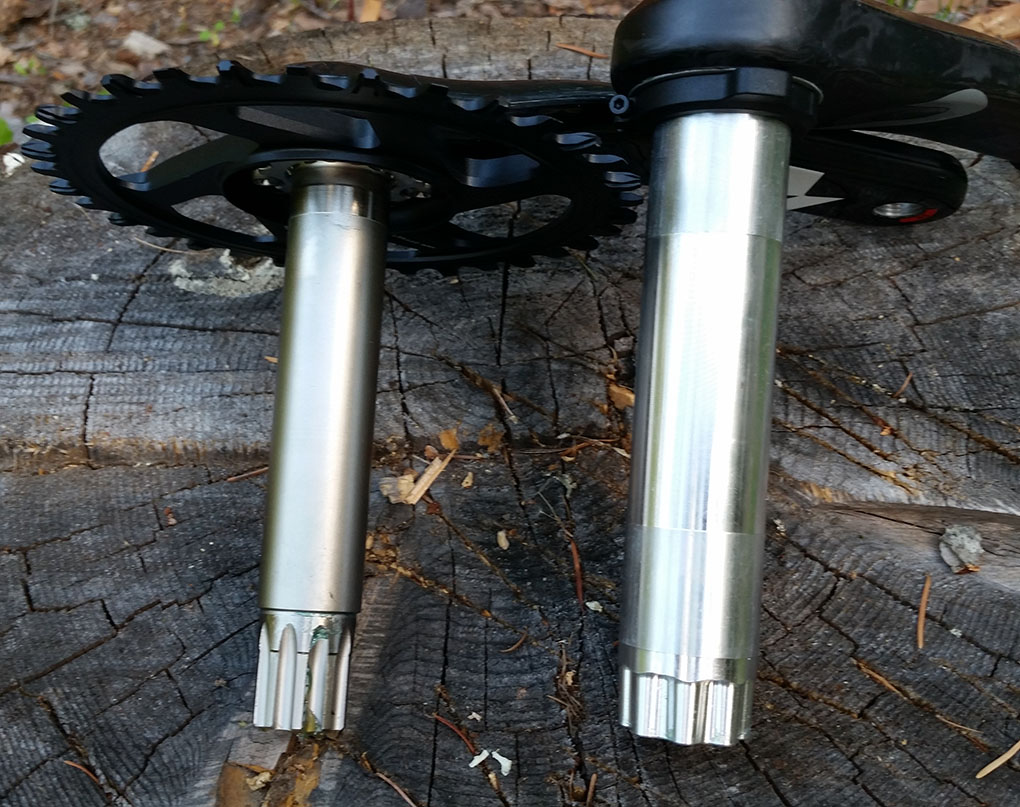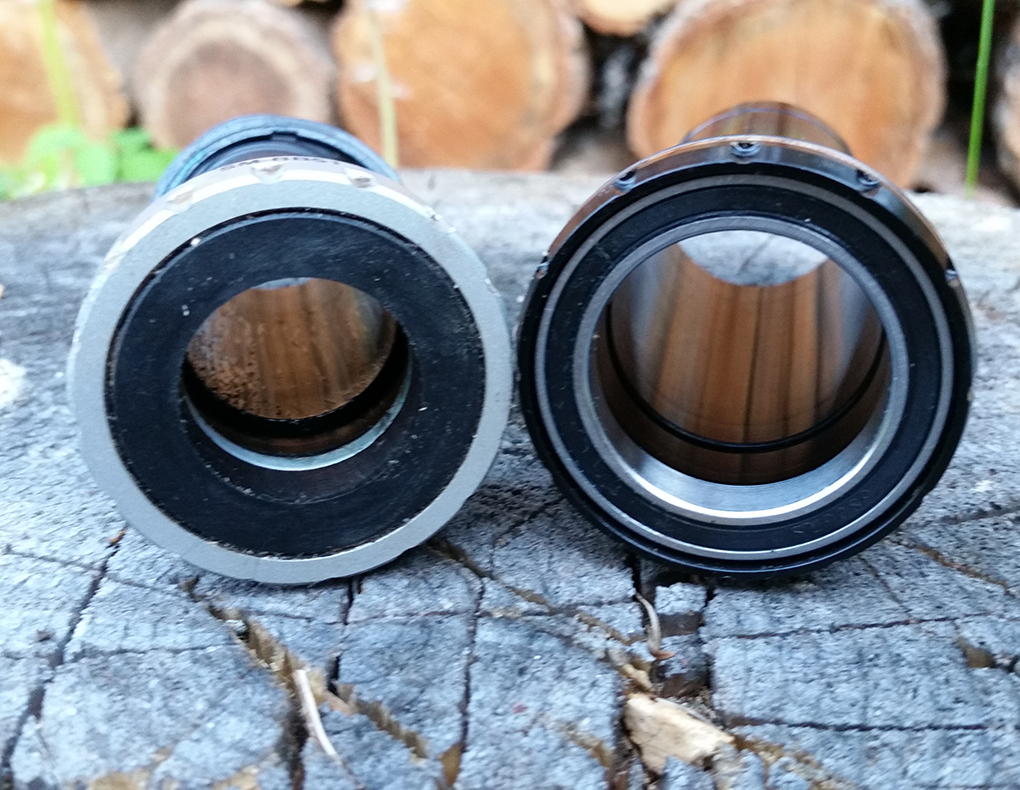
2015 Race Face SixC Carbon Cinch Cranks
Intended Use: AM / Enduro / DH
Configuration Tested: 170mm length, 83mm threaded (BSA) Bottom Bracket, 36 Tooth Direct Mount ring
Blister’s Measured Weight:
Cranks Only: 484 grams
Bottom Bracket (w/ 2 spacers) 104 grams
36T Direct Mount Chainring: 78 grams
Total: 666 grams
MSRP:
Cranks: $459.99
Bottom Bracket: $59.99
Chainring: $69.99
Total: $589.97
Mounted to: 2015 Canfield Jedi
Reviewer: 5’9” 155 lbs
Duration of Test: ~1 month
Test Locations: Whitefish, Montana; Whistler, BC
Race Face’s SixC Cinch cranks represent the latest evolution in super light, super strong, carbon cranks.
They’re not the lightest cranks in Race Face’s entire lineup, but they’re the lightest that, as Race Face puts it, are “DH rated.” In fact, Race Face claims that this is “the lightest production DH rated carbon crankset on the planet.”
They also offer an impressive amount of configuration options that make them attractive to riders looking for a crankset with flexible compatibility.
I put in my time on the SixC (pronounced “six”) cranks mounted to my Canfield Jedi. Aside from assessing the basic functionality of the cranks, the Jedi frame works well for testing cranks because it has a low bottom bracket, and I tend to smash the shit out of the cranks that are attached to it.
Compatibility
Before I wade into the details of these cranks, they deserve some accolades on the compatibility front: not only does the Race Face SixC come in all of the normal configurations for all of the normal bottom bracket standards and drivetrain options, but it’s also fairly easy to reconfigure the cranks to fit most other standards.

The chainrings are replaceable, the spider is removable, and (most notably), the spindle is replaceable. If I wanted to swap the cranks from my Canfield Jedi (83mm threaded BB) to my Devinci Spartan (BB92 pressfit BB), I could buy a different spindle for around $80 and do that, which is not something I can say for any other cranks I own. In an era where more and more parts are proprietary or are only compatible with certain frames, it’s really nice to see Race Face come out with a high-end product that will work on the vast majority of bikes available.
The Bottom Bracket
The SixC Cinch cranks are, as the name implies, built around a spindle with the Cinch spline interface. This means the cranks spin on a large 30mm aluminum spindle that, as I noted above, can be removed and replaced. Most notable about this feature is the fact that you get the increased stiffness that comes with a BB30 setup, but it’s still compatible with all the other normal bottom brackets out there.
For reference, here’s a picture of the SixC cranks with the Cinch spindle next to some Shimano Zee cranks, which have a 24mm spindle.

There is, arguably, a downside though. The bigger spindle also means bigger bearings and cups to make everything fit. This means the bottom bracket requires a BSA30 tool, which is also used by Rotor, Zipp, and Enduro, but it’s a different tool than what you might already have in your toolbox for other external cup bottom brackets. Not a huge deal, and Park Tool already makes a BSA30-compatible socket that you can put on your torque wrench. But still, it’s another tool to buy.
The other potential issue is, as you can see in the picture below, the bearings are a bit taller on the BB for a 24mm spindle, which means they’re running on larger balls.

Theoretically, the smaller bearings on the SixC bottom bracket may crap out a bit quicker. So far, mine are still completely smooth, but only time will tell.
The Chainring
I used a 36-tooth direct mount chainring, which mounts up using an internal cup bottom bracket tool. Aside from the direct mount configuration, the ring is a normal Race Face narrow / wide ring that works fairly well. A minor downside is that the 36t option I tested is the largest available in the direct mount configuration. So if you want to run something bigger on these cranks, you’ll have to mount up a spider.
I’m running a chain guide on my DH bike, so I didn’t have any issues with tossing the chain. In my prior experience running Race Face narrow / wide rings without a guide, they hold the chain very well, although maybe not quite as well as a SRAM or Wolf Tooth option.
NEXT: The Cranks, Performance, Etc.
